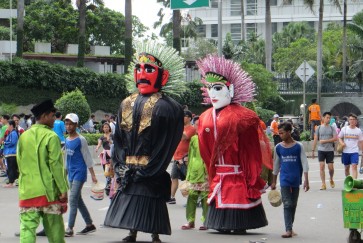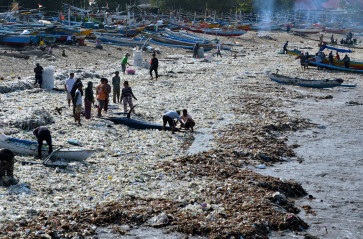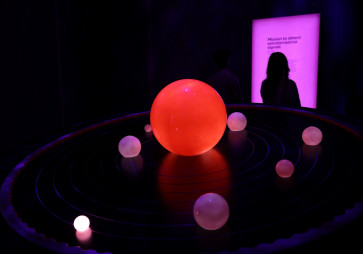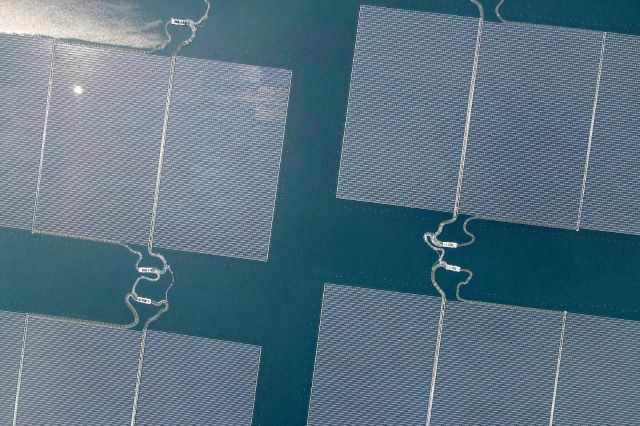S. Sulawesi village turns to tourism to save karst
The Rammang-Rammang limestone formations in Salerang village, Maros Regency, South Sulawesi, stands out as one of the increasingly popular nature-park tourist sites in South Sulawesi, although it was earmarked for quarrying limestone and marble in early 2000
Change text size
Gift Premium Articles
to Anyone

T
he Rammang-Rammang limestone formations in Salerang village, Maros Regency, South Sulawesi, stands out as one of the increasingly popular nature-park tourist sites in South Sulawesi, although it was earmarked for quarrying limestone and marble in early 2000.
In 2016, the village attracted 43,480 tourists, 20 percent of whom were from Europe and China. Rammang-Rammang now ranks among the top 10 places to see in South Sulawesi, according to Tripadvisor, boasting limestone ridges, rivers and rice fields.
The limestone is part of the Maros-Pangkep karst formation, which includes 46,200 hectares of limestone located at the western edge of Bantimurung Bulusaurung National Park, South Sulawesi. It is considered one of the largest karst formations in the world.
Rammang-Rammang is unique for its towering limestone hills and thousands of years’ worth of prehistoric, distinctive endemic flora and fauna, as well as the area’s geological and cultural history. It is home to hundreds of native species of flora and fauna, including orchids, birds and mammals. The village is also surrounded by more than 250 caves, 41 of which contain remnants of prehistoric human activity.
Rammang-Rammang is home to the Salerang people, who had already lived in the area for generations when a mining company asked the government for permission to mine limestone and marble there.
M Iwan, a resident of Salerang, said the company had offered residents mining jobs and infrastructure for the village.
“In 2007, the company acquired permits from the regency administration and explored the area. However, when the company approached villagers with their plans, some questioned about why [the land] was attractive for that kind of investment,” Iwan said during a discussion on karst ecosystems.
They finally convinced villagers to reject the quarry in Salerang by suggesting to turn the area into a tourist attraction. This led to the rejection of 12 mining permits and protected 356 hectares from environmental destruction.
Residents formulated plans for tourism activities in the area, including river tours, for which they charged between Rp 200,000 (US$14.99) and Rp 500,000, in addition to guided hikes to the “rock forests” and prehistoric caves for camping and bird-watching.
Residents who cater to tourists earn Rp 3 million on average every month, which is more than quarry worker would make.
Sonny Mumbunan, a researcher from the Research Center for Climate Change of the University of Indonesia, said the government must consider that the economy also involves the environment and the communities who live in it. (dis)









